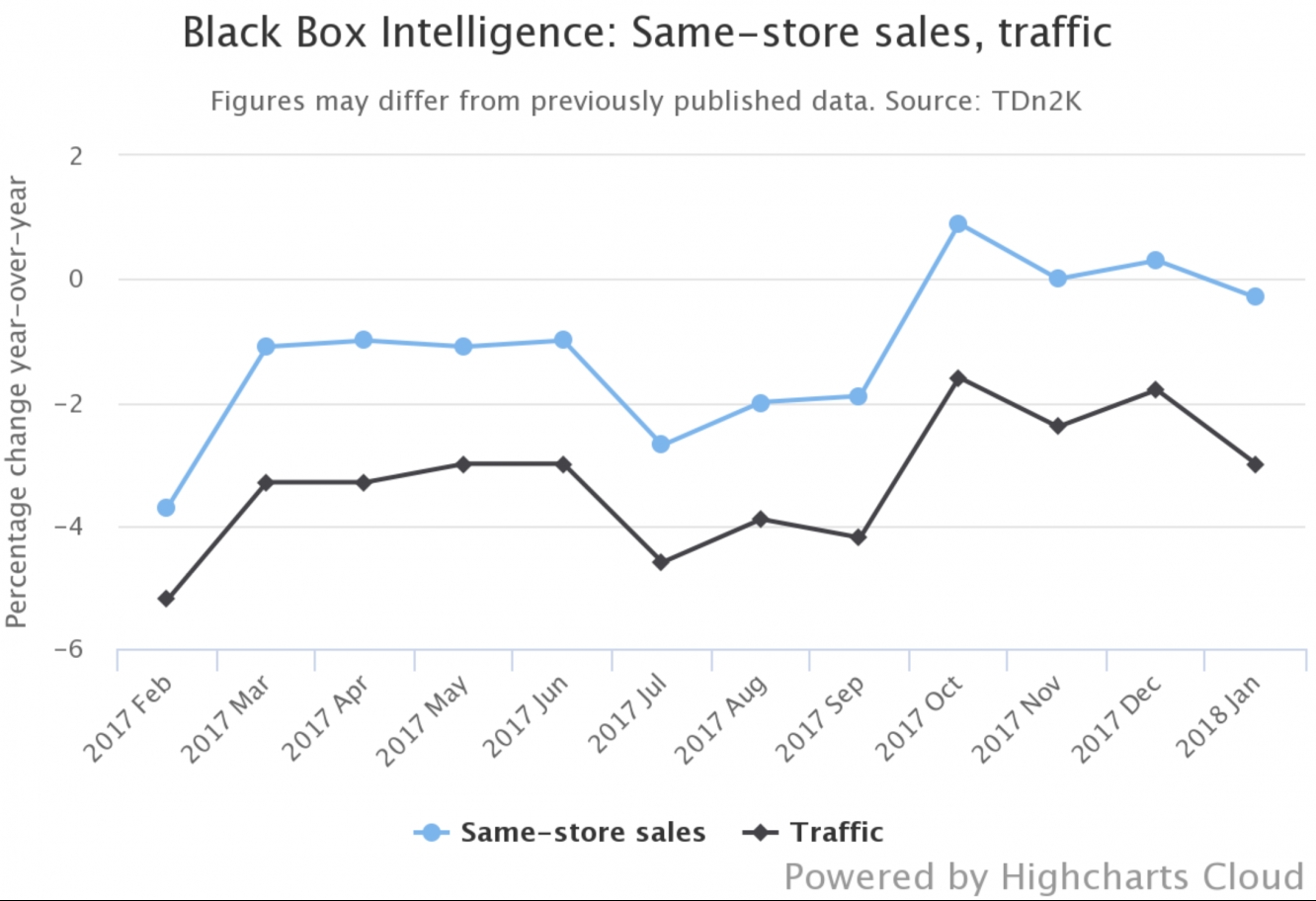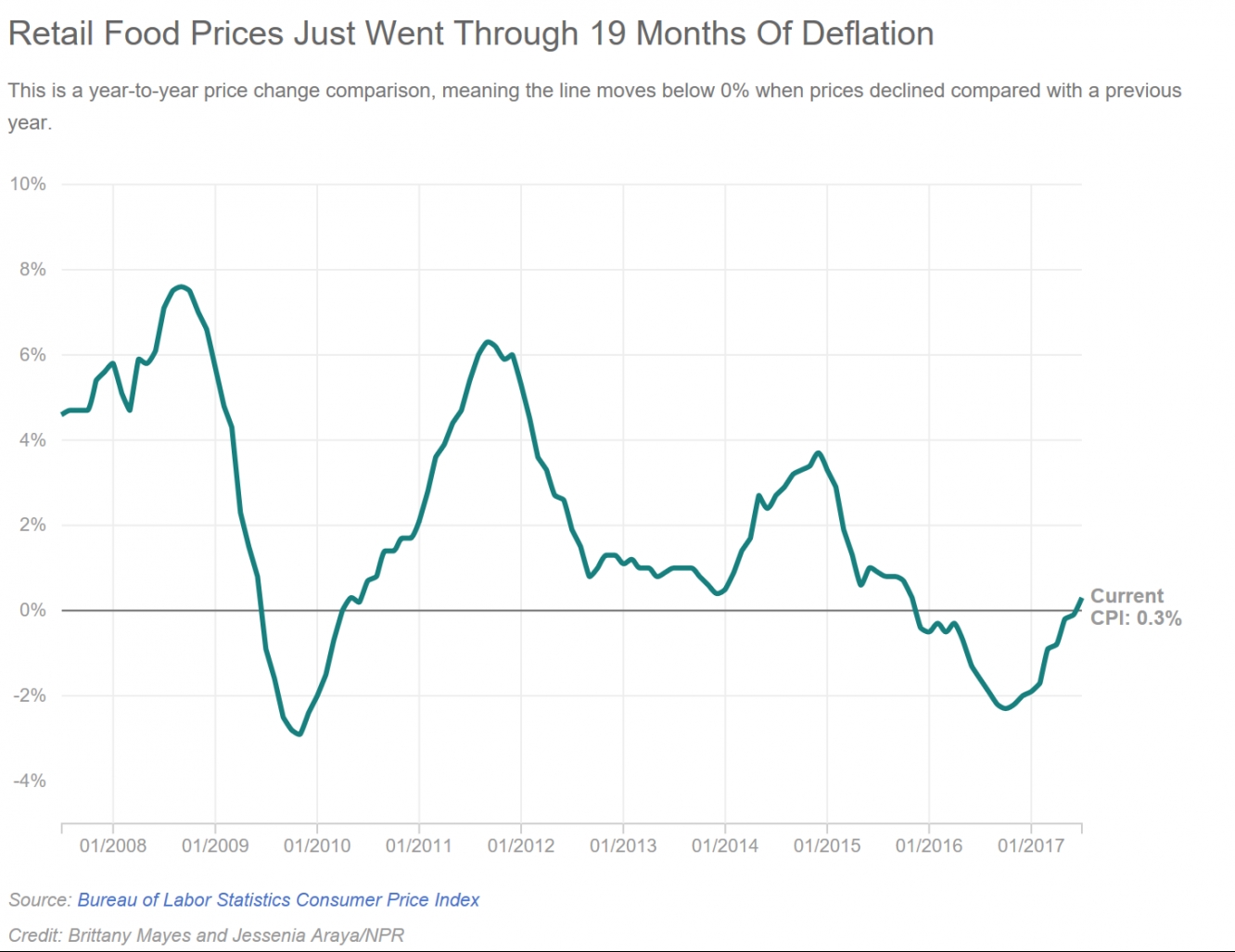In 2017, market data from TDn2K’s Restaurant Industry Snapshot showed that restaurant sales crashed to the second worst market decline in 5 years. Victor Fernandez, executive director of insights at TDn2K commented that
“when you think about from recession until now, it’s all been negative traffic growth every year… when we look at it by brand, you can see that the percentage of brands that are experiencing positive growth is shrinking.”
Foodservice retail trends have been declining since early 2016 in what has been termed the “restaurant industry slump” due to slowdown in sales and traffic. However, the September Restaurant Industry Snapshot revealed that the third quarter saw U.S. restaurants recording the best sales and traffic growth in the last three years. Comp sales were up 1.24% in the last quarter and comp traffic tightened to a decline of 1.38% in the same period
Why Is The Food Services Industry Depressed?
· Deflation in Grocery Prices
Over the last couple of years, there’s been a steady decline in the price of groceries making it much cheaper to cook at home than it is to eat out in restaurants. The United States has been recording the longest stretch of dropping food prices due to improved supply and also because of the fight for market share between major players in the industry.
Researchers at Priceonomics when comparing the finances of eating at home in relation to ordering food from a restaurant observed that it almost five times more expensive to eat out than to cook at home. In fact, using a meal-kit service as opposed to cooking from scratch will also cost you about three times more money.
Interestingly, the retail price of grocery and food items have been on a consistent decline over the last 19 months. Hence, consumers are cooking at home more often because it is obviously cheaper.
· Too Many Restaurants
The second reason the food service industry has been declining in the last couple of years is because the industry is suffering from an oversupply of restaurants. From the third quarter of 2011 to the first quarter of 2018 the number of restaurants grew more than 8% from 611, 566 to 660,755. The increase in the number of restaurants is turn caused a price war among restaurant chains and the price wars, in turn, is literarily eating into their profit margins.
· Changing Consumer Preferences
The third reason for the weakness in the general food service industry and especially among restaurants is the growing change in consumer preferences. For one, the growing consciousness of the foodie culture is making many people become more creative with food and seek newer food experiences outside the traditional menus. More so, the growing trend towards “healthier” food especially among young affluent people is also shrinking the potential target market of the fast food sector. A 2016 study by NPD Group Inc. revealed that consumers made 433 million less lunchtime trips and that almost $3.2 billion could be accounted as loss business for that decline.
· Consumers Distrust Restaurant Loyalty Programs
Lastly, many of loyalty programs that restaurants set up to incentivize their customers to keep coming back often end up alienating those very customers. Many loyalty programs don’t have an immediate incentive, some of them are too difficult to join, they are mostly not personalized to fit individual preferences and they lack offsite engagement outside the physical space of the restaurant. What has Blockchain got to do with restaurants?
Blockchain technology has brought about many disruptive changes to the global economic various industries are starting to see real life use cases for Blockchain technology in solving some of the systemic problems of centralization in business. Despite all the reasons for the decline in the food service industry, it is impossible to ignore the fact that many customers are dissatisfied with the quality of service and the way in which loyalty programs are managed in food companies.
Resto is leveraging Blockchain technology to promote food safety, prevent fraud, and enhance fair and fast payment in the food industry. The Resto Loyalty Platform gives a competitive advantage especially for small business owners who want to compete on a level playing field with larger food brands by enabling them to implement blockchain powered loyalty programs without having to build the blockchain infrastructure from scratch.
In addition, many operators in the food service market are still struggling to acquire the marketing data and tools necessary to generate the reports and make informed business decisions. Resto will, among other things serve as ready-made platform outfitted with tools for collection of data to target the right consumers and improve service delivery in the food industry.
With blockchain entering so many industries and improving them for businesses and customers alike, it is a safe bet that there will be blockchain powered solutions in the near future which will help industries in trouble flourish and thrive.


